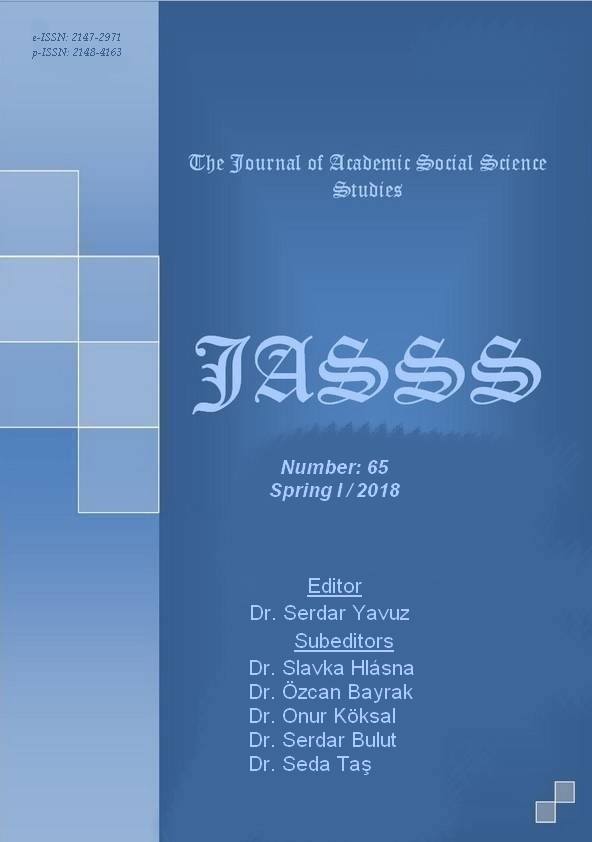KİTAB-I MAKBÛL DER HÂL-İ HUYÛL ADLI ESERDE ATLARIN ÖZELLİKLERİ DONLARI VE TEDAVİLERİNDE KULLANILAN BİTKİ ADLARI
Author :
Abstract
Bu makalede ele alınan eser 06 Mil Yz A 1691/1 arşiv numarasıyla, Kitâb-ı Makbûl der Hâl-i Huyûl adıyla, Ankara Milli Kütüphane’de kayıtlıdır. Her sayfasında 15 satır bulunan harekeli nesihle yazılmıştır ve 48 yapraktır. Kâdî-zâde Mehmed (Muhammed) b. Mustafâ Balıkesirî (ö. 1044/ 1635) tarafından 17. yüzyılda II. Osman’a itafen kaleme alınmıştır. Eserin 26 nüshası bulunmaktadır. Bir mukaddime, bir hâtime ve dört bâb üzerine tertip edilmiştir. Ele aldığımız eserde, atların toplumumuzdaki yeri ,atlara ad vermenin önemi, atlarda bulunması gereken iyi özellikler, hangi donlara sahip olan atların iyi olduğu anlatılmaktadır. İyi atlarda bulunması gereken sıfatlar ‘‘y” harfiyle başlayan Türkçe yirmi yedi özellik ile sıralanmıştır. Eserde at beslemenin önemi ve fazileti ayetlerle ve hadislerle aktarılmıştır. Baytarnâme kısmında at hastalıklarından ve bu hastalıkları tedavi atmek için kullanılan çeşitli bitkilerden söz edilmektedir.
Keywords
Abstract
The literature workcovered in this article is under record at Ankara Milli Library with the archive number 06 Mil Yz A 1691/1, with the name Kitâb-ı Makbûl der Hâl-i Huyûl. It is written using harekelinesih style of writing having 15 lines on each page and 48 pages in total. The author Kâdîzâde Mehmed (Muhammed) b. Mustafâ Balıkesirî (ö. 1044/ 1635) had written the literature work in the 17th century and dedicated to II. Osman. The literature has 26 copies. It is composed of an introductorypart, a conclusion part and four main paragraphs. The topics covered in Kâdîzâde Veterinary are the importance of horses in our society, importance of naming the horses, good characteristics horses should have and what type of attributes good horses have. The twenty-seven attributes that decent horses should have are listed in Turkish language starting with the letter ‘‘y”. The literature work also quotes hadiths and ayahs emphasizing the economic and religious importance of horse cultivation.Veterinary part of the work mentions about diseases of horses and different herbs that can be used to cure those diseases.





